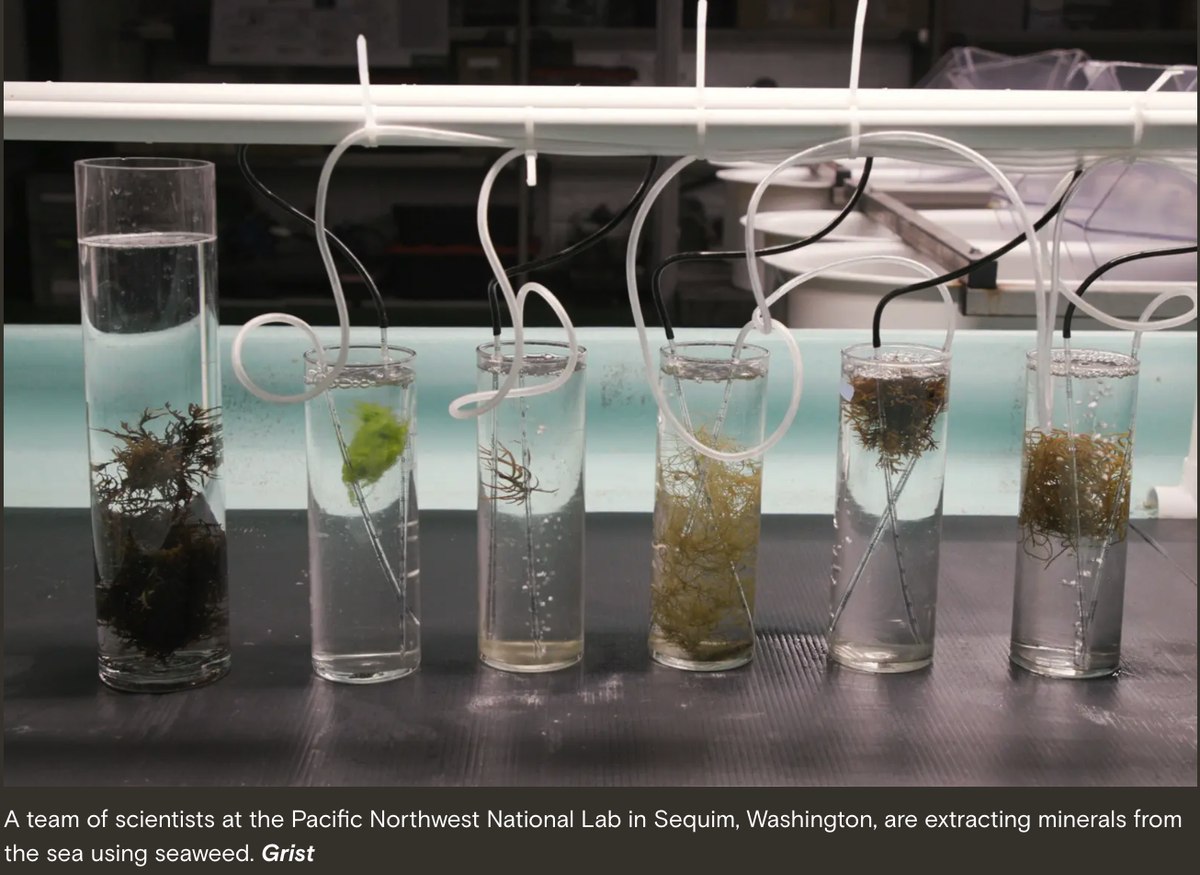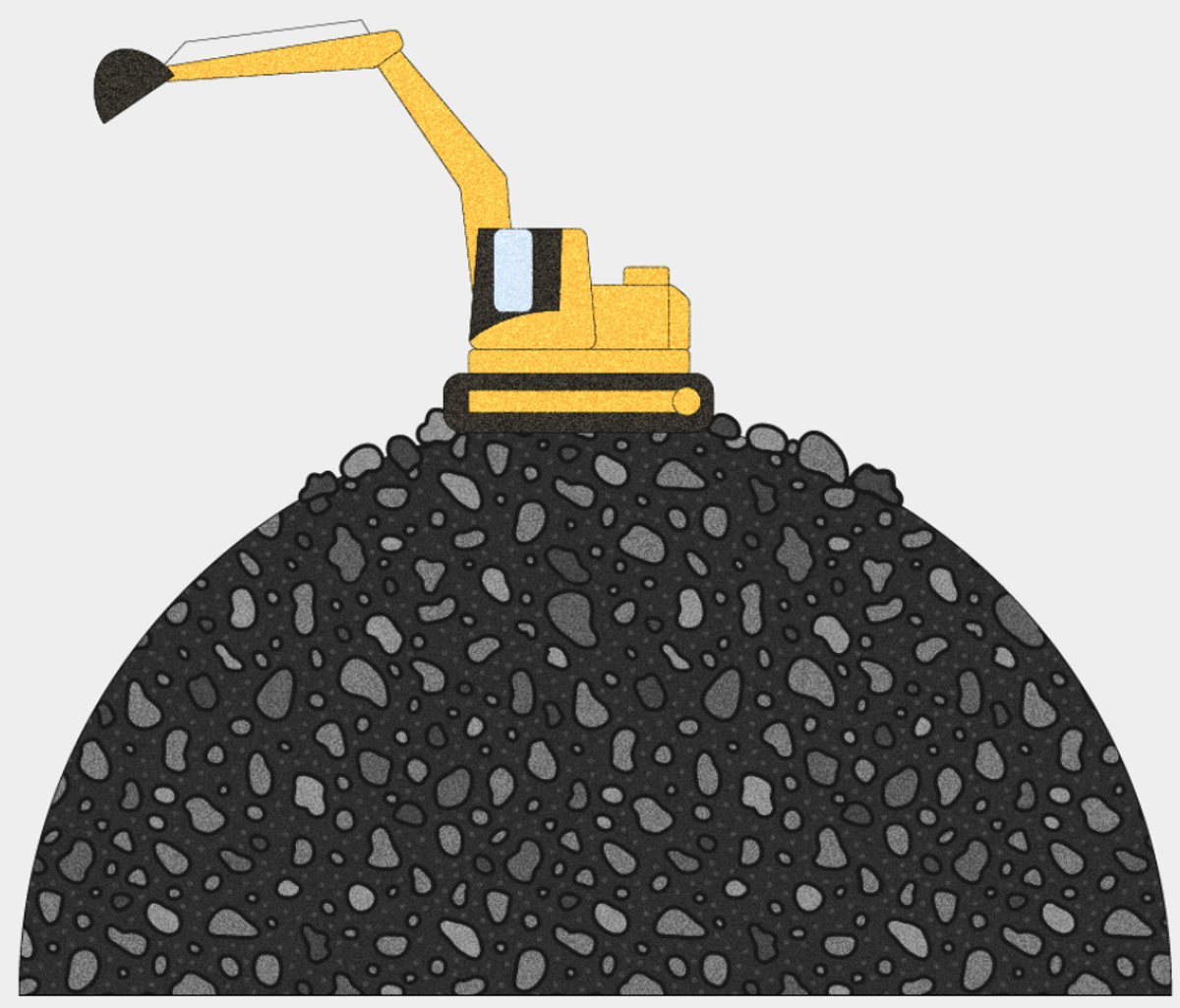The Green Page:

The Weirdest Ways Scientists Are Mining For Critical Minerals, From Water To Weeds
Not all critical minerals need to come from digging up the earth.
Mining our waste
Centuries of mining, drilling, and burning fossil fuels have left large swathes of Appalachia covered in a big, toxic mess. Billions of tons of coal ash — the hard residue left over from coal burned by power plants — are buried or piled in the open air across the region, slowly poisoning the soil and water around them. Heavy metals leak from old mines into nearby creeks, turning the water bright orange as they oxidise. And much of the mineral-rich radioactive liquid that’s used to drill miles underground for fracked natural gas gets deposited into storage wells that can leak into the water tables around them.
These waste streams are so toxic in part because they contain metals and minerals from the coal seams and shale formations from which we draw our fossil fuels. In other words, in one of the many ironies of the climate crisis, fossil fuel extraction has unearthed large quantities of the very materials that could wean us off of carbon-intensive energy: minerals like lithium, cobalt, manganese, and nickel, which are essential for green infrastructure such as the batteries that store renewable energy.
Scientists have been researching the potential for mineral mining in coal waste for decades. Newer research is now also exploring the possibility of pulling lithium from the wastewater produced by oil and gas extraction: A study from the National Energy Technology Laboratory this past May suggests that up to 40 per cent of current domestic lithium demand could be sourced from fracking wastewater in the Marcellus Shale. (That quantity is still “strikingly small” relative to anticipated future demand for lithium, according to Sean O’Leary with the Ohio River Valley Institute.)
What’s unknown, however, is whether these minerals can ever be gathered cheaply enough to compete with mining them in more conventional ways. Extracting critical minerals from solid waste, such as coal ash, is a resource- and energy-intensive process. The burnt residue must be crushed into a powder and processed multiple times with acids and sodium hydroxide, then dissolved into a liquid form to extract the desirable elements. (Processing acid mine drainage is less involved, and therefore less expensive, because it’s already a liquid.)
While a few private companies have partnered with universities to conduct pilot projects — such as Rare Earth Salts, Aqua Metals, and General Electric with Pennsylvania State University; Montana Resources with West Virginia University; and Element USA with the University of Texas, Austin — there are still major questions to answer about the technology’s market viability. In addition to uncertainty about cost competitiveness, is there enough supply to warrant investment in processing plants?
Sarma Pisupati, director of the Centre for Critical Minerals at Pennsylvania State University, points out that every coal seam contains a distinct mix of minerals, and it’s difficult to determine the location and volume of a significant store of rare-earth minerals without direct sampling from a given site. “We need detailed analysis and estimates of reserves that we have in the ground before we can sink in millions and millions of dollars to build a plant,” he said.
We have some early ideas of what those reserves might look like. A 2024 study from the University of Texas estimates that there are 11 million tons of rare-earth elements in coal ash reserves around the country, but there’s huge variation in the types and concentration of those elements between, say, waste sites in Wyoming and Pennsylvania. Another report from the Department of Energy’s Office of Fossil Energy and Carbon Management notes that processing such a relatively small mass of these elements from thousands of tons of coal ash means that any commercial mineral extraction plant would have to find some other economic purpose — like turning the leftover, post-processing coal waste into fertilizer or concrete additives.
Alternatively, fossil fuel companies themselves could be incentivised to extract the in-demand minerals from their own waste. This is one reason why environmental groups are ambivalent on the promise of mineral extraction from fossil fuel waste, according to Rob Altenburg, senior director of climate and energy for the organisation PennFuture, an environmental advocacy nonprofit in Pennsylvania. On one hand, an economic motivation to clean up and utilise fossil fuel waste could be a boon for ecosystems and communities dealing with legacy pollution.
“But when you are essentially giving [fossil fuel] companies another revenue stream, are you creating a net benefit for the environment by addressing this waste, or are you subsidising something … that is then going to outcompete a cleaner alternative?” he said.


